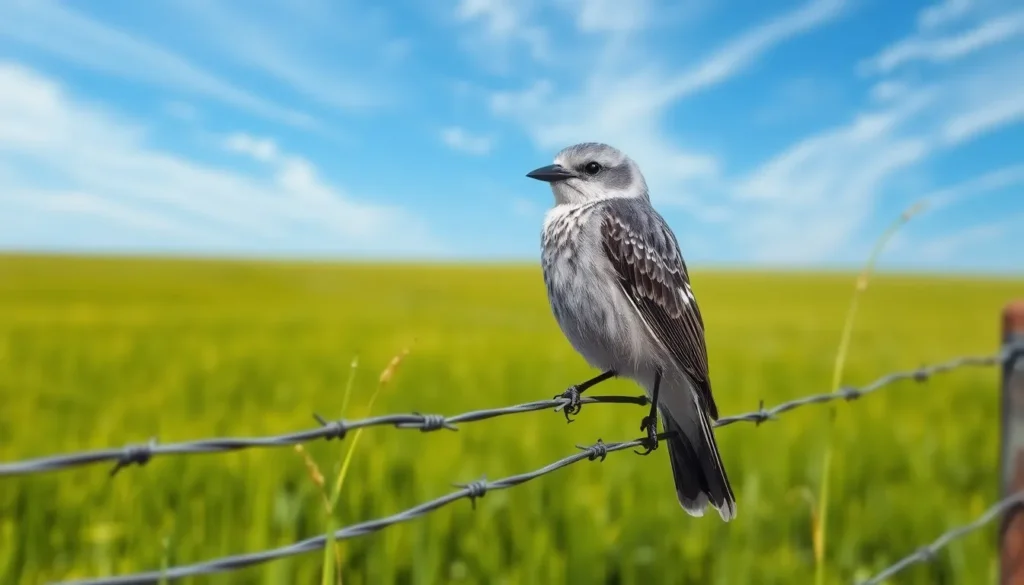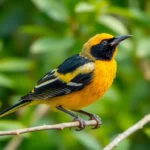We’ve all heard of fierce raptors like eagles and hawks, but there’s a smaller predator that’s equally impressive – the shrike bird. These remarkable hunters pack the predatory prowess of a bird of prey into a songbird’s body, earning them the nickname “butcher birds” for their unique hunting techniques.
What makes shrikes truly fascinating isn’t just their ability to catch prey nearly their own size. It’s their ingenious method of storing food by impaling victims on thorns and barbed wire, creating natural pantries that would make any survivalist proud. This behavior sets them apart from virtually every other bird species on the planet.
From the loggerhead shrike of North America to the red-backed shrike of Europe, these birds demonstrate nature’s incredible adaptability. We’re about to explore the captivating industry of shrikes and discover why these small but mighty hunters deserve our attention and admiration.
What Is a Shrike Bird?
Shrikes belong to the Laniidae family and represent one of nature’s most efficient small predators. These remarkable passerine birds demonstrate hunting prowess that rivals much larger raptors.
Physical Characteristics and Identification
Shrikes possess distinctive features that make identification straightforward across most species. Most shrikes measure 6 to 12 inches in length with robust builds and proportionally large heads. Their bills curve at the tip and feature a pronounced hook similar to birds of prey.
Key Physical Features:
| Feature | Description | Purpose |
|---|---|---|
| Bill | Hooked, curved tip with sharp edges | Tearing prey and precise kills |
| Eyes | Large, forward-facing with keen vision | Spotting prey from perches |
| Legs | Strong with sharp talons | Grasping and manipulating prey |
| Wings | Relatively short and rounded | Quick bursts of flight for hunting |
Color patterns vary significantly among species but typically include combinations of gray, black, white and brown. Males often display more vibrant plumage than females, particularly during breeding season. Black masks across the eyes appear in many shrike species, creating their characteristic fierce appearance.
Their tail feathers extend proportionally longer than most songbirds, providing enhanced maneuverability during hunting flights. Wing patches of white or light colors flash conspicuously when shrikes take flight, serving as identification markers for birdwatchers.
Species Overview and Classification
The Laniidae family encompasses approximately 34 shrike species distributed across four primary genera. Scientists classify these birds within the order Passeriformes, making them technically songbirds even though their predatory nature.
Major Shrike Genera:
- Lanius: Contains most familiar species including loggerhead shrikes and great grey shrikes
- Corvinella: Features longer-tailed African species like yellow-billed shrikes
- Eurocephalus: Includes white-crowned shrikes found in African savannas
- Urolestes: Contains magpie shrikes with distinctive long tails
Geographic distribution spans every continent except Antarctica and South America. North American populations primarily consist of loggerhead shrikes (Lanius ludovicianus) and northern shrikes (Lanius borealis). European regions host red-backed shrikes (Lanius collurio) and lesser grey shrikes (Lanius minor).
African species demonstrate the greatest diversity with over 20 different shrike types inhabiting various ecosystems from deserts to woodlands. Asian populations include brown shrikes (Lanius cristatus) and long-tailed shrikes (Lanius schach), both known for extensive migration patterns.
Conservation status varies dramatically among species, with some populations thriving while others face important habitat pressures and declining numbers across their traditional ranges.
Habitat and Geographic Distribution
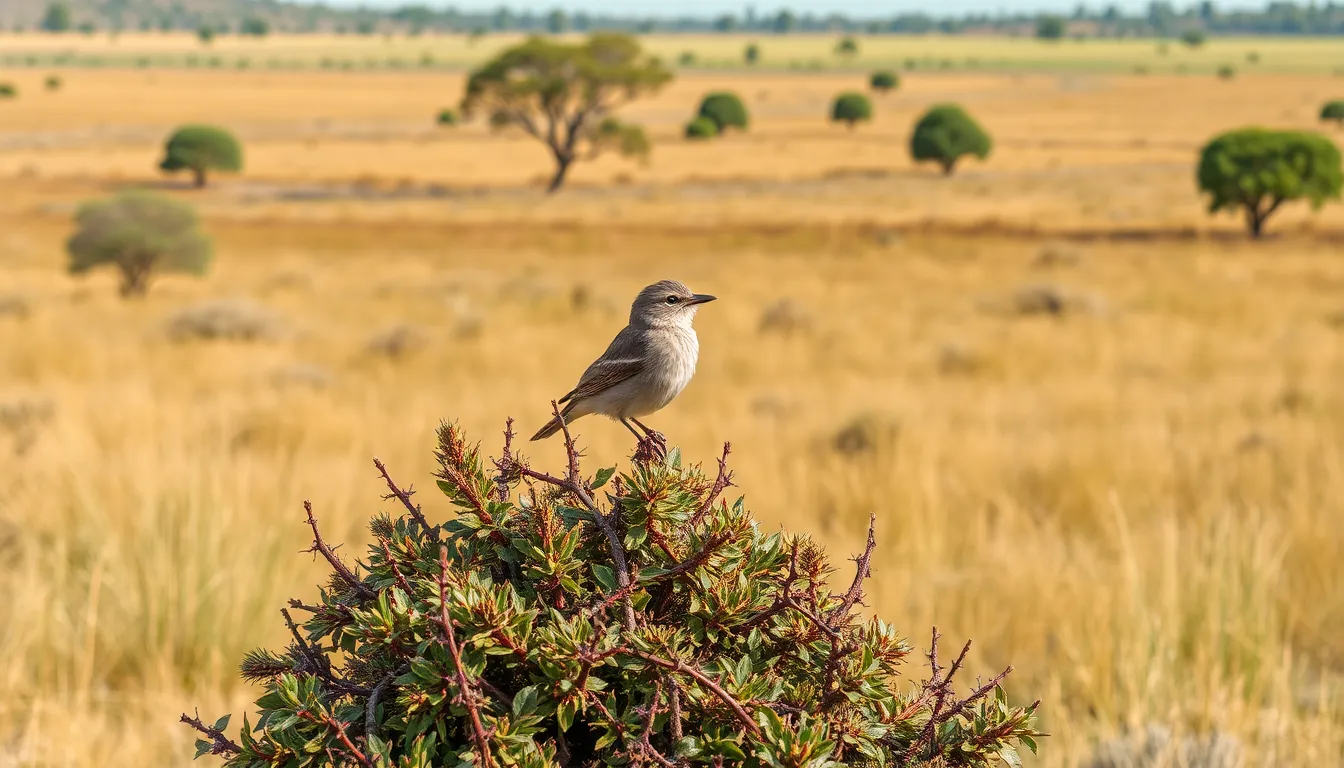
Shrikes occupy diverse habitats across multiple continents, with their distribution patterns reflecting remarkable adaptability to various environmental conditions. These accomplished predators establish territories in regions that provide optimal hunting opportunities and suitable nesting sites.
Preferred Environments
Open woodlands serve as primary habitat for most shrike species, offering the perfect balance of perching sites and hunting grounds. Grasslands with scattered trees provide excellent vantage points for spotting prey, while agricultural areas attract shrikes due to abundant insect populations. Scrublands and savanna regions support large shrike populations, particularly in Africa where species diversity reaches its peak.
Desert margins accommodate specialized shrike species that have adapted to arid conditions. Farmland edges create ideal hunting corridors where shrikes can exploit both natural and agricultural food sources. Parklands and golf courses in suburban areas increasingly host shrike populations, demonstrating their ability to adapt to human-modified landscapes.
Elevation preferences vary significantly among species, with some thriving at sea level while others inhabit mountainous regions up to 4,000 feet. Habitat quality depends heavily on the availability of thorny bushes or barbed wire for food storage, making fenced agricultural areas particularly attractive to these birds.
Migration Patterns
Northern shrike populations exhibit strong migratory behavior, traveling from Arctic breeding grounds to temperate wintering areas across North America. These movements typically occur between September and November, with return migrations happening from March through May. Southern populations of loggerhead shrikes demonstrate partial migration, with some individuals remaining year-round while others move shorter distances to escape harsh winter conditions.
European shrike species display varied migration strategies depending on their geographic location. Red-backed shrikes breeding in northern Europe undertake extensive journeys to African wintering grounds, covering distances exceeding 3,000 miles. Mediterranean populations often remain sedentary throughout the year, taking advantage of milder climates and consistent food availability.
African shrike species generally exhibit nomadic movements rather than true migration, following rainfall patterns and seasonal prey abundance. Seasonal shifts in territory use allow these birds to maximize hunting success during different times of year. Weather patterns significantly influence migration timing, with early spring warmth triggering earlier northward movements in recent decades.
Hunting Behavior and Diet
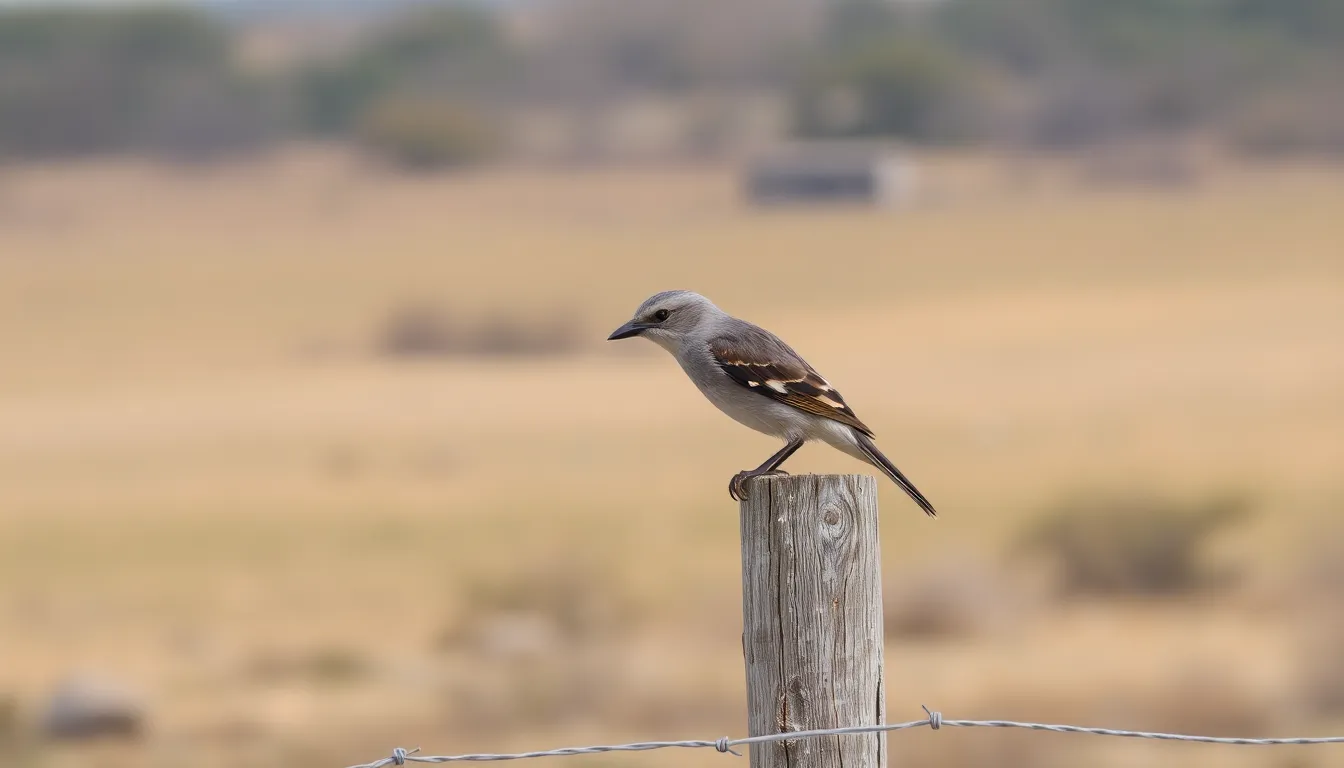
Shrikes demonstrate exceptional hunting prowess through specialized techniques that set them apart from other small birds. These skilled predators employ unique strategies to capture and store prey efficiently.
Unique Predatory Techniques
Shrikes use their powerful hooked bills to deliver precise strikes to prey, targeting vulnerable areas like the head and neck. The birds position themselves on elevated perches such as fence posts, telephone wires, and tree branches to scan for movement below.
Patience characterizes their hunting approach as shrikes remain motionless for extended periods before launching swift attacks. These aerial hunters can capture insects mid-flight with remarkable accuracy, while ground-based prey encounters involve rapid dives from observation points.
Shrikes possess exceptional grip strength that allows them to subdue prey nearly matching their own body weight. Their talons lack the powerful grasp of raptors, yet they compensate through precise bill placement and leveraged positioning techniques.
Territorial hunting patterns emerge as shrikes establish defined hunting zones spanning 2 to 10 acres depending on prey density. Each bird patrols its territory systematically, memorizing optimal perching locations and prey movement corridors.
Prey Selection and Storage Methods
Insects comprise 80% of most shrike species’ diets, including grasshoppers, beetles, crickets, and moths. Small vertebrates such as mice, lizards, frogs, and nestling birds provide essential protein during breeding seasons.
The infamous impaling behavior distinguishes shrikes from all other songbirds as they secure prey on thorns, barbed wire, and sharp twigs. This larder system serves multiple functions: tenderizing tough-skinned prey, storing excess food during abundant hunting periods, and marking territorial boundaries.
| Prey Type | Percentage of Diet | Storage Duration |
|---|---|---|
| Insects | 65-85% | 1-3 days |
| Small mammals | 10-20% | 3-7 days |
| Reptiles/amphibians | 5-15% | 2-5 days |
Shrikes demonstrate selective impaling preferences, choosing thorns measuring 1-3 inches in length for optimal prey security. Acacia thorns, rose bushes, and hawthorn spikes rank among their preferred storage locations due to their sharp points and structural stability.
Cached prey items undergo natural preservation processes as exposure to air and sunlight partially desiccates the tissue. This storage method extends food availability during harsh weather conditions when active hunting becomes challenging or impossible.
Breeding and Nesting Habits
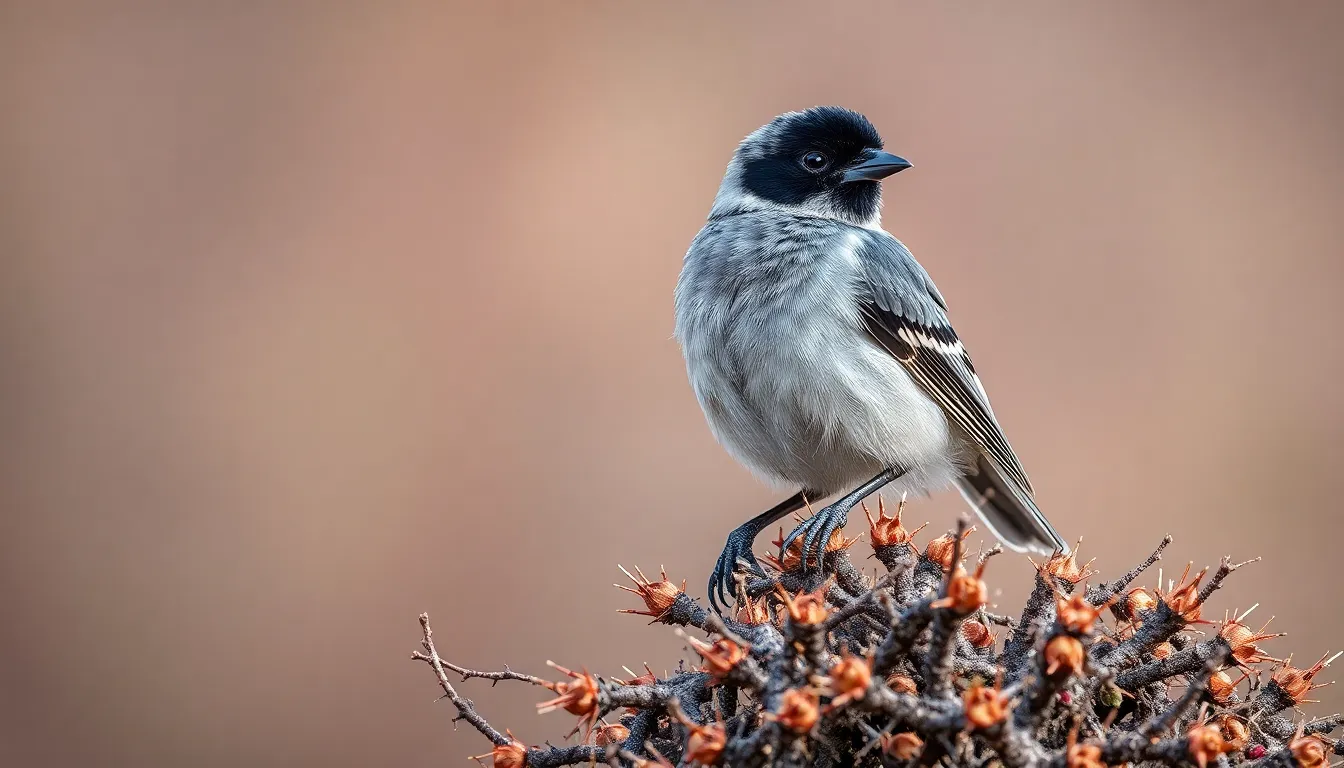
Shrike birds demonstrate sophisticated breeding behaviors that reflect their predatory nature and territorial instincts. We observe these remarkable birds employing elaborate courtship displays and constructing strategic nests that ensure successful reproduction.
Mating Rituals and Courtship
Males establish territories during early spring by selecting prominent perches and captivating in aggressive displays toward rivals. Territorial boundaries typically span 10 to 25 acres depending on habitat quality and prey availability. Loggerhead shrikes begin courtship rituals in March through April across their North American range.
Courtship feeding represents a critical component of shrike mating behavior. Males demonstrate their hunting prowess by presenting freshly caught prey to potential mates. Grasshoppers, beetles, and small lizards serve as common courtship offerings that males impale on thorns before delivering to females. This behavior reinforces pair bonding while showcasing the male’s ability to provide resources.
Visual displays accompany vocal courtship in most shrike species. Males perform flight displays featuring rapid wing beats and dramatic dives from elevated positions. Red-backed shrikes execute distinctive butterfly flights with slow wingbeats and spread tail feathers. Vocalizations include complex songs incorporating mimicked calls from other bird species, with some males reproducing sounds from up to 20 different species.
Nest Construction and Parental Care
Female shrikes select nest sites in dense shrubs or thorny bushes between 3 to 15 feet above ground. Hawthorn, blackthorn, and rose bushes provide ideal nesting locations due to their protective thorny structures. Construction typically requires 4 to 6 days with females building cup-shaped nests measuring 4 to 5 inches in diameter.
Nesting materials include twigs, grasses, moss, and animal hair woven together to create sturdy foundations. Females line nest interiors with soft materials like feathers, wool, and fine plant fibers. Northern shrikes incorporate spider webs and lichen to camouflage their nests among branch structures.
Clutch sizes range from 3 to 7 eggs depending on species and environmental conditions. Loggerhead shrikes typically lay 4 to 6 pale gray eggs with brown spotting. Incubation periods last 14 to 16 days with females maintaining consistent temperatures while males provide food deliveries. Females rarely leave nests for more than 10 minutes during peak incubation phases.
Both parents participate in feeding nestlings after hatching occurs. Chicks remain in nests for 17 to 20 days requiring constant food provisioning. Parents deliver insects and small vertebrates every 15 to 30 minutes during daylight hours. Fledgling care continues for an additional 3 to 4 weeks after young birds leave the nest as parents teach hunting techniques and territorial behaviors.
Different Shrike Species Around the World
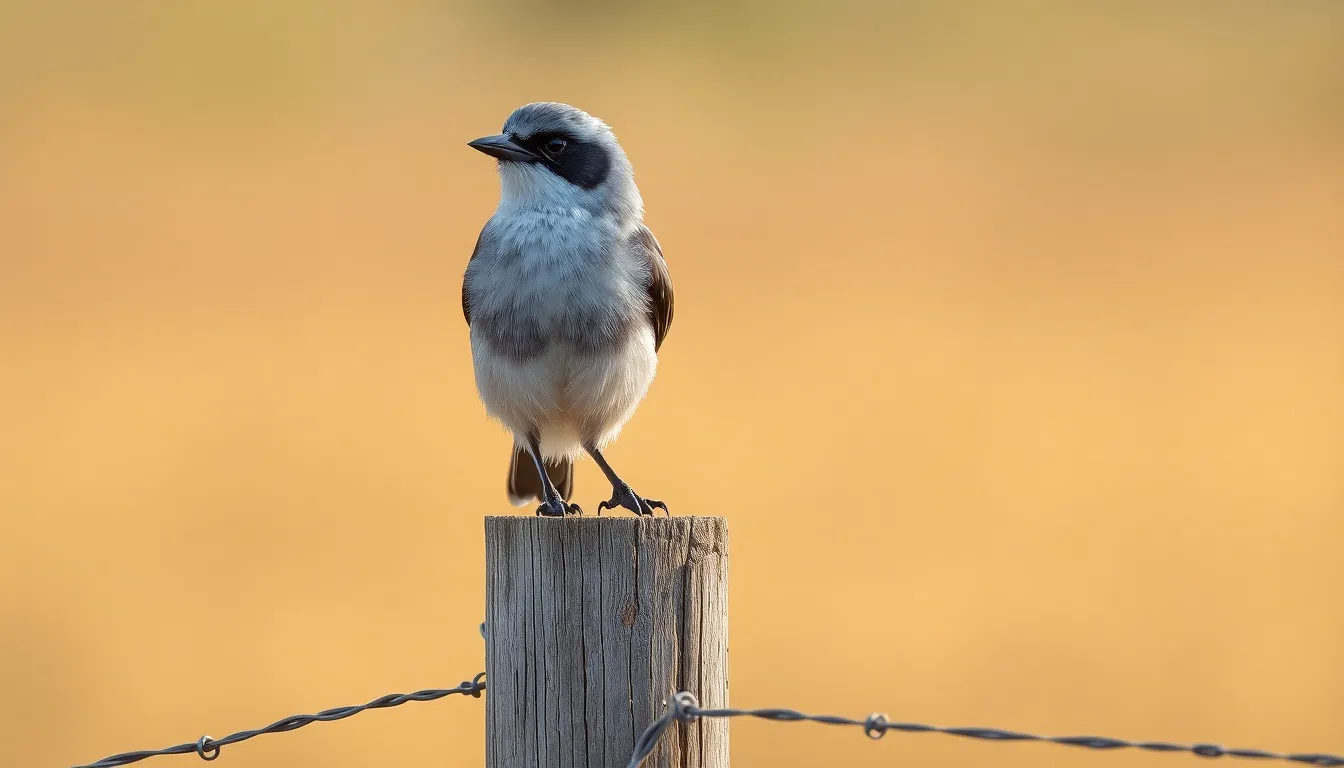
Shrike species exhibit remarkable diversity across global regions, with over 30 distinct species distributed throughout North America, Europe, Asia, and Africa. Each species has evolved specialized adaptations that reflect their exact environmental challenges and prey availability.
North American Shrikes
Loggerhead Shrike (Lanius ludovicianus) dominates the southern United States and Mexico, measuring 8 to 10 inches in length with distinctive gray upperparts and white underparts. These resident birds maintain territories year-round in open habitats including grasslands, agricultural fields, and desert scrublands. Their black mask extends from the bill through the eyes, creating a distinctive appearance that distinguishes them from other North American species.
Northern Shrike (Lanius borealis) represents the larger of the two North American species, reaching lengths of 9 to 11 inches. These migratory hunters breed in the boreal forests of Alaska and northern Canada before moving south to the northern United States during winter months. Their brown-barred flanks and slightly curved bill separate them visually from their southern relatives.
Population data reveals concerning trends for North American shrikes:
| Species | Population Estimate | Conservation Status | Primary Threats |
|---|---|---|---|
| Loggerhead Shrike | 2.9 million | Near Threatened | Habitat loss, pesticide use |
| Northern Shrike | 50,000-499,999 | Least Concern | Climate change effects |
European and Asian Species
Red-backed Shrike (Lanius collurio) breeds across Europe and western Asia, displaying striking sexual dimorphism with males featuring chestnut-red backs and gray heads. These birds migrate up to 6,000 miles to their African wintering grounds, making them one of the longest-distance migrants among shrike species. European populations have declined by 38% over the past three decades due to agricultural intensification.
Great Grey Shrike (Lanius excubitor) spans the largest range among shrike species, inhabiting northern Europe, Asia, and parts of North America. Males and females appear similar with gray upperparts, white underparts, and prominent black eye masks. These shrikes prefer open woodlands and forest edges where they hunt from conspicuous perches.
Brown Shrike (Lanius cristatus) breeds throughout eastern Asia from Siberia to Mongolia, displaying brown upperparts and buff-colored underparts. Their migration routes extend through Southeast Asia to wintering grounds in India and Southeast Asia. These adaptable hunters frequent agricultural areas and forest clearings.
Bull-headed Shrike (Lanius bucephalus) remains endemic to East Asia, inhabiting Japan, Korea, and eastern China. Their robust build and aggressive territorial behavior distinguish them from other Asian species. Japanese populations stay resident while continental birds migrate to Southeast Asian wintering areas.
Asian shrike species demonstrate remarkable migration patterns, with some populations traveling over 4,000 miles between breeding and wintering grounds. Climate change affects these routes, forcing species to adjust timing and destination points based on shifting weather patterns and prey availability.
Conservation Status and Threats
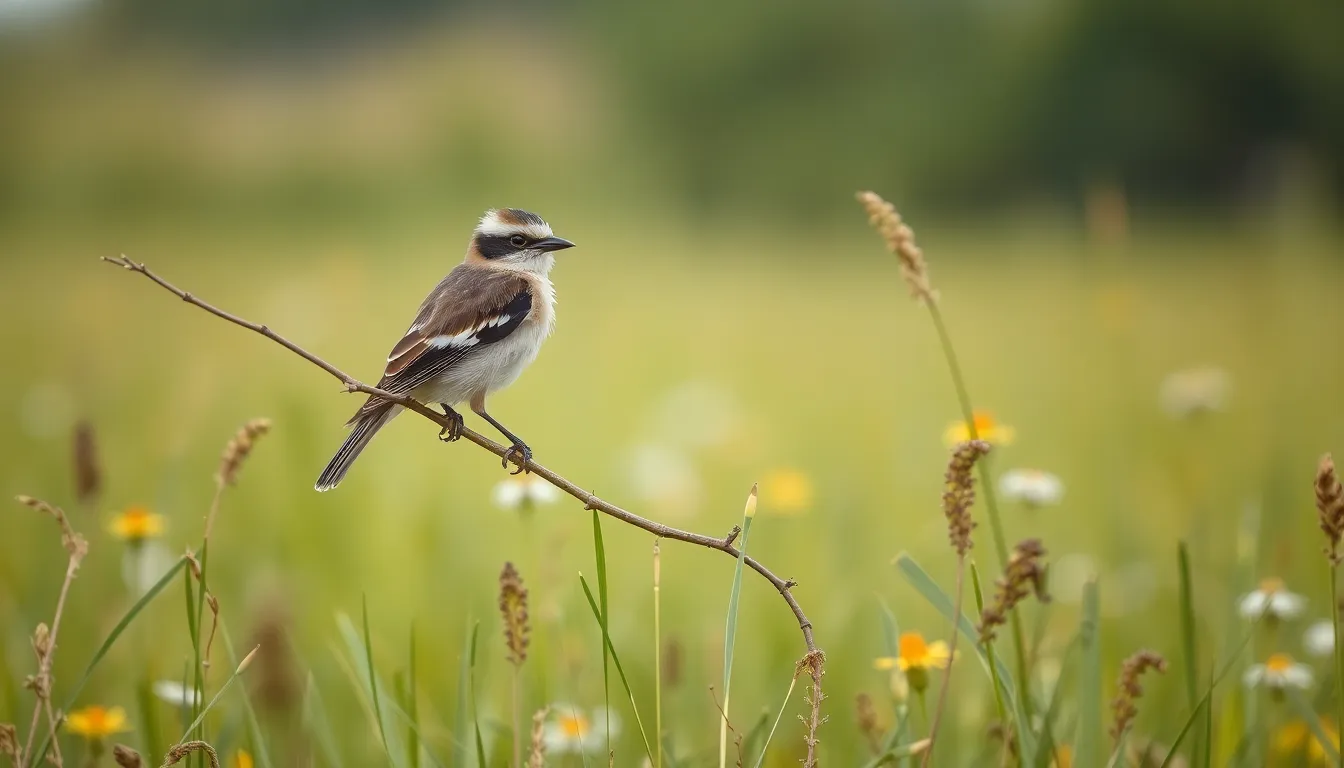
Shrike populations face mounting challenges across their global range, with several species experiencing important declines that warrant immediate conservation attention. Conservation organizations classify multiple shrike species as vulnerable or near threatened due to habitat degradation and environmental pressures.
Population Trends
Loggerhead shrikes have experienced dramatic population declines exceeding 75% since 1966 across North America, prompting their listing as a species of conservation concern in multiple states. Northern shrike populations remain relatively stable, though climate change affects their Arctic breeding territories and traditional migration patterns.
European red-backed shrikes have recovered from severe 20th-century declines through targeted conservation efforts, yet populations in Western Europe remain fragmented and vulnerable. Great grey shrikes show mixed trends, with stable populations in Scandinavia contrasting with declining numbers in Central Europe.
African shrike species face varying conservation challenges, with fiscal shrikes maintaining stable populations while bush shrikes experience localized declines in exact regions. Long-tailed shrikes across Asia demonstrate resilience, though habitat conversion threatens certain subspecies in Southeast Asian countries.
Population monitoring reveals that island endemic species face the greatest risks, with several subspecies restricted to single locations experiencing severe population bottlenecks.
Human Impact and Habitat Loss
Agricultural intensification eliminates the open woodland edges and grassland mosaics that shrikes require for successful hunting and nesting. Pesticide applications reduce insect prey availability by 40-60% in treated areas, forcing shrikes to expand their territories or abandon traditional breeding sites entirely.
Urban development fragments shrike habitats, creating isolated patches too small to support breeding pairs or maintain viable populations. Road construction and vehicle strikes account for important mortality rates, particularly affecting ground-foraging species during winter months.
Climate change shifts prey distributions northward, disrupting established predator-prey relationships and forcing Arctic-breeding species to alter their traditional ranges. Rising temperatures affect insect emergence patterns, creating mismatches between peak food availability and nestling development periods.
Barbed wire removal from agricultural landscapes eliminates crucial impaling sites that shrikes depend on for food storage and territorial marking. Conservation programs now focus on maintaining these anthropogenic features while creating natural alternatives through targeted habitat management.
Invasive plant species alter native vegetation structures, reducing suitable nesting sites and changing prey communities in ways that disadvantage specialized shrike hunting techniques.
Observing Shrikes in the Wild
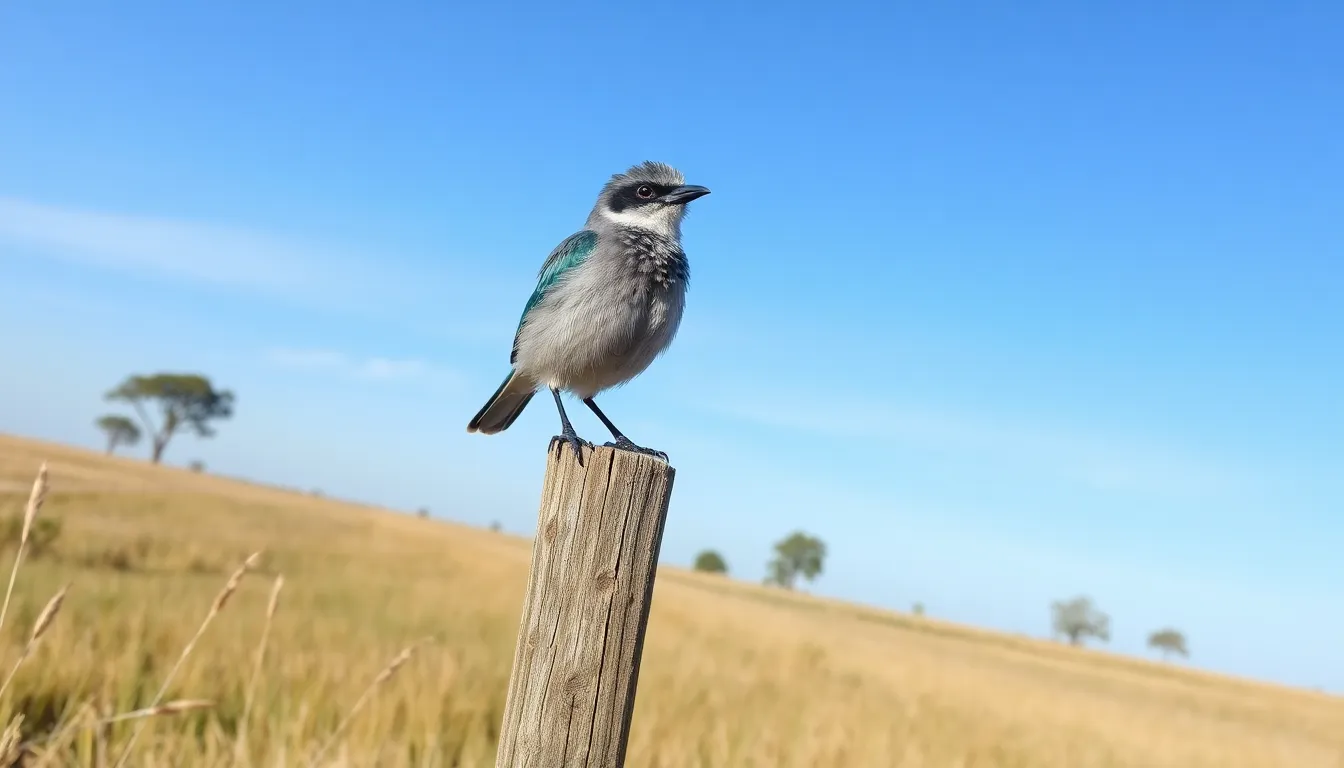
Locating shrikes in their natural habitat requires strategic timing and knowledge of their preferred environments. These impressive predators offer rewarding observation opportunities for dedicated birdwatchers who understand their behavior patterns.
Best Times and Locations for Birdwatching
Early morning hours between 6:00 AM and 10:00 AM provide optimal shrike viewing conditions when these birds actively hunt from exposed perches. Open grasslands with scattered trees create ideal observation sites, as shrikes prefer elevated vantage points like fence posts, telephone wires, and dead branches. Agricultural areas with hedgerows attract loggerhead shrikes throughout North America, particularly during breeding season from April through July.
Seasonal timing significantly impacts shrike observation success rates across different regions. Northern shrikes appear in temperate areas during winter months from November through March, migrating from Arctic breeding grounds to lower elevations. European red-backed shrikes demonstrate peak activity during spring migration periods in April and May, followed by breeding season observations through August.
Desert margins and scrubland environments support shrike populations year-round in southwestern regions. Suburban parklands with mature trees and open spaces provide consistent viewing opportunities, especially where natural prey populations thrive. Elevation preferences vary among species, with some inhabiting sea level coastal areas while others occupy mountainous regions up to 8,000 feet.
Migration corridors offer exceptional viewing opportunities during exact timeframes. Continental flyways concentrate shrike populations along established routes, creating predictable observation windows for experienced birdwatchers. Weather patterns influence daily activity levels, with overcast conditions often reducing hunting behavior compared to clear, sunny days.
Identification Tips for Bird Enthusiasts
Physical characteristics distinguish shrikes from similar sized songbirds through several key features. Hooked bills measuring 0.5 to 0.8 inches create the most distinctive identification marker, resembling miniature raptor beaks adapted for predatory behavior. Body length ranges from 6 to 12 inches depending on species, with robust builds appearing more compact than typical songbirds.
Plumage patterns vary significantly among shrike species but commonly feature contrasting colors. Loggerhead shrikes display blue-gray upperparts with white underparts and distinctive black masks extending from the bill through the eyes. Northern shrikes exhibit similar coloration patterns with more prominent white wing patches and longer tail proportions.
Behavioral observations provide reliable identification methods when physical features remain unclear. Perching habits include maintaining upright postures on exposed branches, posts, and wires while scanning for prey movement below. Head movements demonstrate rapid, alert scanning motions typical of predatory birds rather than seed-eating songbird behaviors.
Hunting techniques create unmistakable identification opportunities for observant birdwatchers. Shrikes launch swift diving attacks from elevated positions, capturing prey with powerful bill strikes before returning to perches. Food storage behavior involves impaling captured prey on thorns, barbed wire, or sharp twigs, creating distinctive “larders” marking shrike territories.
Vocalizations include harsh calls and chattering sounds distinct from melodic songbird repertoires. Males produce territorial songs during breeding seasons, combining musical phrases with aggressive calls. Flight patterns demonstrate undulating motions with alternating wingbeats and glides, differing from straight-line flight paths of many similar sized birds.
Size comparisons help distinguish shrikes from confusing species in field conditions. Loggerhead shrikes measure similar to American robins but appear stockier with proportionally larger heads. Northern shrikes exceed robin dimensions while maintaining compact predatory builds rather than elongated songbird profiles.
Conclusion
The shrike’s unique position as nature’s “butcher bird” showcases the incredible diversity and adaptability found in our avian industry. These remarkable predators have evolved specialized hunting techniques and survival strategies that set them apart from all other bird species.
From their distinctive impaling behavior to their complex territorial displays shrikes demonstrate that size doesn’t determine hunting prowess. We’ve seen how these small yet mighty birds have successfully adapted to environments across multiple continents while facing modern conservation challenges.
Understanding shrikes helps us appreciate the intricate balance of predator-prey relationships in our ecosystems. Their presence serves as an important indicator of habitat health making their conservation essential for maintaining biodiversity in open grasslands and agricultural landscapes worldwide.
Frequently Asked Questions
What are shrike birds and why are they called “butcher birds”?
Shrikes are small predatory birds belonging to the Laniidae family, often called “butcher birds” due to their unique hunting technique of impaling prey on thorns and barbed wire. This behavior resembles a butcher hanging meat, allowing them to store food, tenderize tough-skinned prey, and mark their territory. Despite their small size (6-12 inches), they can catch prey nearly their own size.
Where can shrikes be found around the world?
Shrikes have a global distribution with over 30 species found across North America, Europe, Asia, and Africa. They inhabit diverse environments including open woodlands, grasslands, agricultural areas, scrublands, and suburban parklands. Some species can be found from sea level to mountainous regions, with northern populations often migrating seasonally between Arctic breeding grounds and temperate wintering areas.
What do shrikes eat and how do they hunt?
Shrikes primarily feed on insects, with small vertebrates supplementing their diet during breeding seasons. They hunt from elevated perches using their powerful hooked bills to deliver precise strikes. These patient predators remain motionless before launching swift attacks, often impaling their catch on thorns or barbed wire for storage and easier consumption.
When and where is the best time to observe shrikes?
Early morning hours offer the best opportunities to spot shrikes as they actively hunt from exposed perches. Look for them in open grasslands, agricultural areas, and scrublands. Seasonal timing is crucial – northern shrikes migrate to temperate regions in winter, while European species are most active during spring migration. Their distinctive perching behavior makes them relatively easy to identify.
What conservation challenges do shrikes face?
Many shrike species face significant population declines due to habitat degradation and environmental pressures. Loggerhead shrikes have declined over 75% since 1966, while climate change affects northern populations. Agricultural intensification, urban development, and invasive plant species contribute to habitat loss and reduced prey availability. Conservation efforts focus on maintaining critical habitats to support recovering populations.
How do shrikes breed and build their nests?
Male shrikes establish territories in early spring and perform elaborate courtship displays, often presenting freshly caught prey to potential mates. Females build sturdy cup-shaped nests in dense shrubs, laying clutches that vary by species. Both parents participate in feeding nestlings and teaching essential hunting techniques after the young fledge, ensuring successful territorial behavior development.

